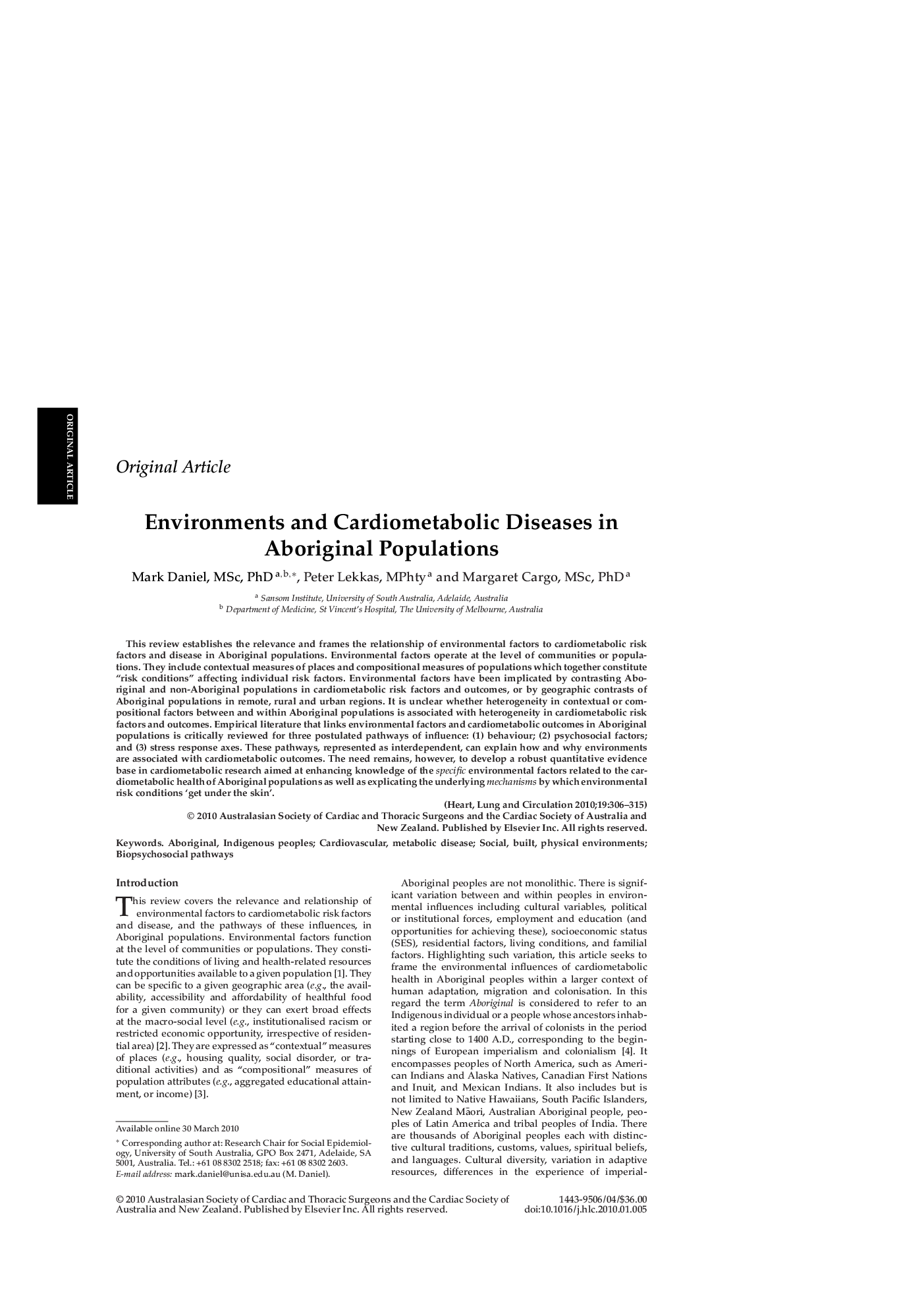| Article ID | Journal | Published Year | Pages | File Type |
|---|---|---|---|---|
| 2920831 | Heart, Lung and Circulation | 2010 | 10 Pages |
This review establishes the relevance and frames the relationship of environmental factors to cardiometabolic risk factors and disease in Aboriginal populations. Environmental factors operate at the level of communities or populations. They include contextual measures of places and compositional measures of populations which together constitute “risk conditions” affecting individual risk factors. Environmental factors have been implicated by contrasting Aboriginal and non-Aboriginal populations in cardiometabolic risk factors and outcomes, or by geographic contrasts of Aboriginal populations in remote, rural and urban regions. It is unclear whether heterogeneity in contextual or compositional factors between and within Aboriginal populations is associated with heterogeneity in cardiometabolic risk factors and outcomes. Empirical literature that links environmental factors and cardiometabolic outcomes in Aboriginal populations is critically reviewed for three postulated pathways of influence: (1) behaviour; (2) psychosocial factors; and (3) stress response axes. These pathways, represented as interdependent, can explain how and why environments are associated with cardiometabolic outcomes. The need remains, however, to develop a robust quantitative evidence base in cardiometabolic research aimed at enhancing knowledge of the specific environmental factors related to the cardiometabolic health of Aboriginal populations as well as explicating the underlying mechanisms by which environmental risk conditions ‘get under the skin’.
